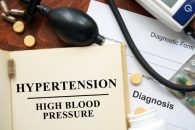The population over 75 is growing gradually, which entails an increase in acute myocardial infarction (AMI) in this group. As we all know, it is fairly common for AMI to present with multivessel disease. It has been shown that younger patients will benefit from complete revascularization vs. a simple resolution of the culprit vessel. However,…
Transcatheter Edge-To-Edge Repair Is Favorable for Elderly Patients at High Surgical Risk
Mitral valve prolapse is the most frequent cause of mitral valve regurgitation and is associated to hospitalization for cardiac failure and mortality. At present, the preferred treatment for operable patients is mitral valve surgical repair. Transcatheter edge to edge repair (TEER) has shown great benefit patients at high surgical risk; however, it has not been…
TICO: Age Impacts the Effect of Antiplatelet Monotherapy
The higher the age, the greater the benefit of ticagrelor monotherapy vs. dual antiplatelet therapy (DAPT) in patients with acute coronary syndrome. This post hoc sub-analysis of the TICO study goes along the same lines as the TWILIGHT study (which we recently discussed), given that age is the most common reason for considering that a…
AHA 2020 | Statins: Confirmed Benefits for the Elderly
Elderly patients (>70) with high cholesterol levels have been systematically excluded from randomized studies on statins, despite their higher risk of cardiovascular events. Presented at AHA 2020 Scientific Sessions and published simultaneously in the Lancet, along comes this primary prevention study including patients between 70 and 100 years of age. The use of therapies to…
Antiplatelet Therapy in Elderly Population: Are the New P2Y12 Inhibitors Safe?
Should elderly patients stick to clopidogrel? The first large study on prasugrel showed an unacceptable increase of bleeding in elderly patients, suggesting the use of 5 mg (although the sample size was small, which hindered the determination of dose efficacy). Later, ticagrelor showed better efficacy than clopidogrel without apparent safety concerns. However, specific evidence on elderly…
Benefit of Anticoagulation in the Elderly with Atrial Fibrillation
Guidelines recommend oral anticoagulation for all ≥ 75-year-old patients with atrial fibrillation. However, there is little evidence as to its net clinical benefit in the elderly population. This study looked at the life net clinical benefit in atrial fibrillation patients over 75 years of age treated with warfarin or apixaban vs. no treatment. Researchers observed…
ESC 2019 | POPULAR AGE: Good Old Clopidogrel Still Valid
According to this study, presented during the ESC 2019 scientific sessions, non-ST acute coronary syndrome (NSTE-ACS) patients treated with ticagrelor presented a significantly higher risk of bleeding than patients treated with clopidogrel, with no counterbalance by higher benefit in thrombotic events. Researchers suggest clopidogrel might be the gold standard for this elderly NSTE-ACS population, though…
How to Prevent Pharmacological Overtreating in the Elderly
Cardiovascular risk increases dramatically with over the years, which almost inevitable leads to treating the elderly with statins, based on risk. To prevent over treatment, we need to identify fragile patients (bed-ridden or with dementia), whose condition might make this treatment futile on the one hand, and on the other hand, patients who regardless their…
Many Guidelines, Much Confusion. Blood Pressure Targets in the Elderly
Seeing as hypertension prevalence and incidence increases with age, treating elderly patients of paramount importance. The AHA/ACC guidelines have lowered cohort hypertension thresholds to >130/80 mmHg, whereas the European guidelines have kept the classic >140/90 mmHg, though recommending lower thresholds for most patients at the same time. Lower than 130/80 mmHg is recommended with the…
After 100,000+ Patients, TAVR Becomes the New Standard of Care
Eighty years did the trick for one the countries with more experience in transcatheter aortic valve replacement (TAVR), which made it the new “standard of care” to treat elderly patients. Following in the footsteps of pioneer Alain Cribier, Germany has led the adoption of TAVR in Europe and the rest of the world. Since 2008,…








